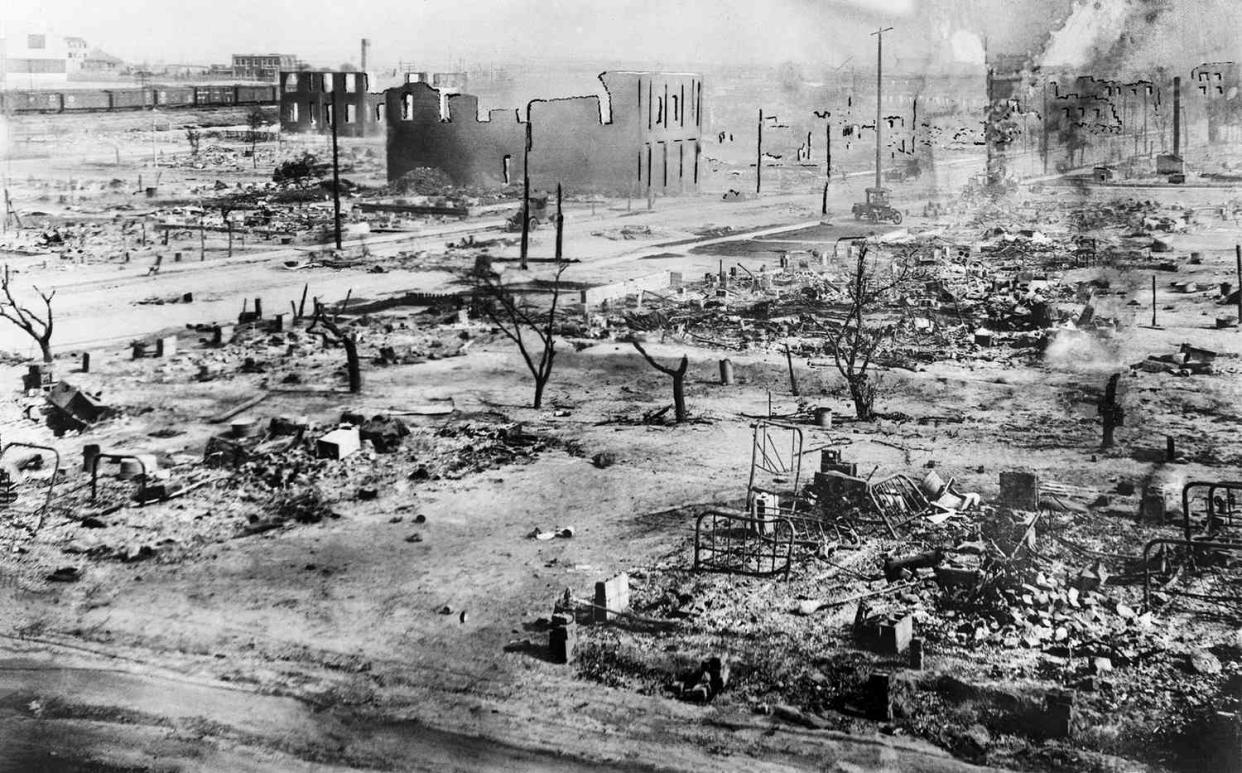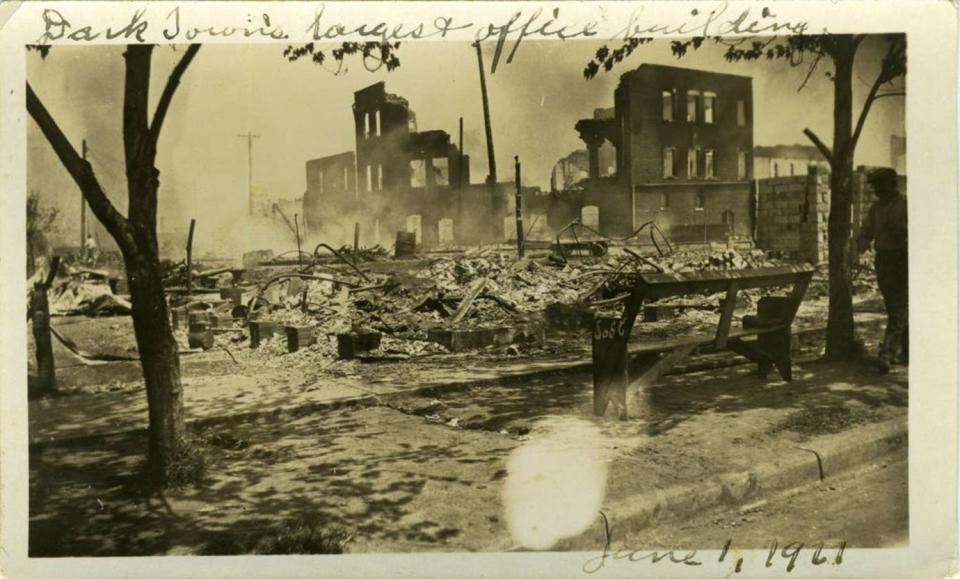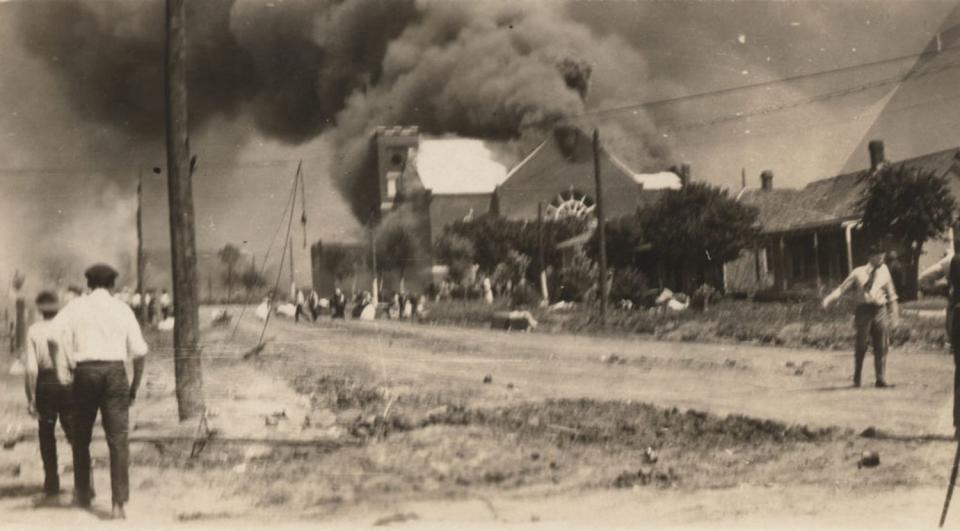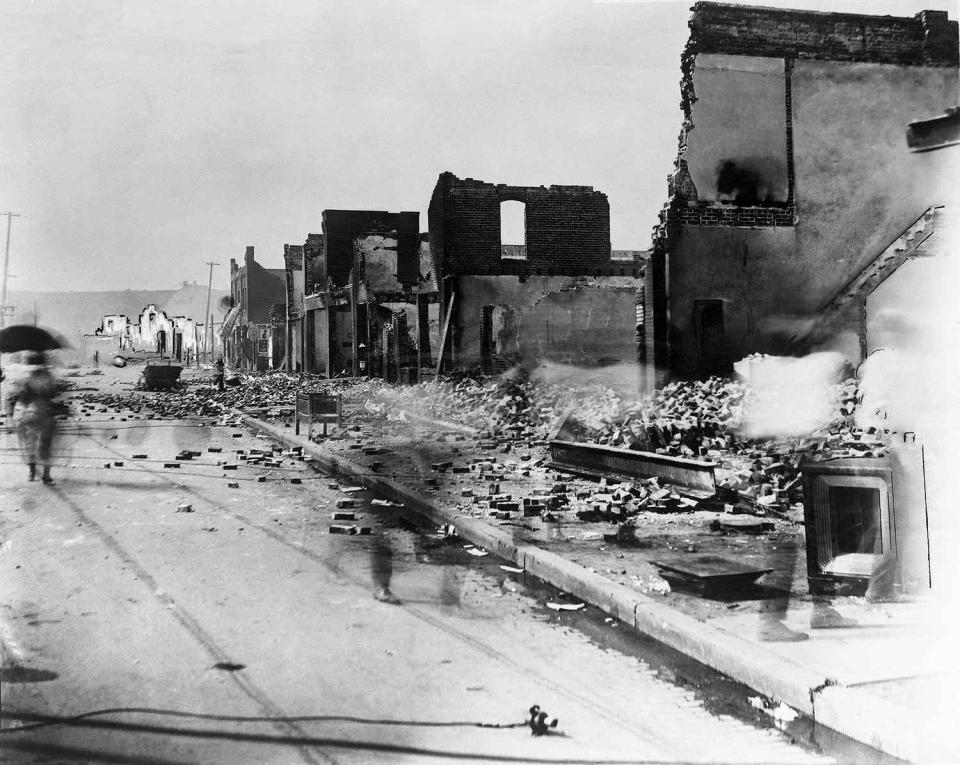The History Behind the 1921 Tulsa Race Massacre

Bettmann Archive/Getty Images Aftermath of the Greenwood community following the 1921 Tulsa race massacre
The 1921 Tulsa Race Massacre in Oklahoma was one of the deadliest events of racist violence in American history.
The two-day attack led by a White mob resulted in the deaths of as many as 300 Black people. Thirty-five city blocks were burned to the ground and decades of segregation, trauma and financial hardship followed for the Black community.
"It really is a bloody, shameful stain on American history," MSNBC's Trymaine Lee recently told PEOPLE. "Some people have struggled to recoup what was stolen from them, and others have inherited pain and trauma from the massacre that continues to bear down on them today."
For years, the massacre that took place from May 31 to June 1, 1921, was left out of history books and school curriculums. It was underplayed, inaccurately reported or not reported on at all. It began to disappear from libraries and conversations about American history altogether. But one century later, historians, writers, political leaders and community activists are bringing forth discussions that focus on the event, what led up to it and how it's still impacting generations of Americans to this day.
RELATED: TV Documentaries Revisit 1921 Tulsa Race Massacre: 'Black Lives Did Not Matter'
Read on to learn about what ignited the Tulsa Race Massacre, how it destroyed the vibrant Tulsa neighborhood of Greenwood, known as the Black Wall Street, and how the events and aftermath are still relevant to race relations and the racial wealth gap in America today.

Courtesy of University of Tulsa - McFarlin Library Special Collections Aftermath of the Tulsa Race Massacre, June 1, 1921
The Backstory
On May 30, 1921, a young Black man named Dick Rowland, a shoe shiner, ended up in an elevator in Tulsa's Drexel Building with a White woman named Sarah Page, en route to the bathroom. From here, the details of exactly what happened vary, but it is said that Rowland bumped into Page in the elevator and she started to scream. Chaos ensued and the Tulsa police arrested Rowland, according to the Tulsa Historical Society and Museum.
What Led to the Massacre
The following day, May 31, the Tulsa Tribune released a report claiming that Rowland had attacked Page in the elevator, which caused a confrontation between Black and White residents surrounding the courthouse where Rowland was being held. The report was seen as a tactic to keep the Black community down, and gave the White residents an excuse to lash out and act on their resentment at how the Black community had started to thrive in the Greenwood District of Tulsa, a vibrant and prosperous epicenter of Black business and culture at the time. The flourishing enclave was deemed the Black Wall Street, and was home to many businesses, homes, schools, churches, a public library and more. Shots began to ring out and the Black residents retreated to Greenwood. By the early hours of June 1, Greenwood had been burned to the ground and hundreds had been murdered.

Courtesy of University of Tulsa - McFarlin Library Special Collections. Thanks, Jeff Greenwood's Mt. Zion Baptist Church burns during the Tulsa Race Massacre, June 1, 2021
The Horror and Devastation that Followed
According to the Tulsa Historical Society and Museum, "35 city blocks lay in charred ruins, more than 800 people were treated for injuries and contemporary reports of deaths began at 36. Historians now believe as many as 300 people may have died."
At the time, public officials selected only White men, some who had even participated in the violence, and made them deputies. They were given weapons and were deployed to arrest nearly all of Greenwood's residents. An estimated 1,256 homes were destroyed. Historians estimate the destruction left about 10,000 residents homeless, according to NPR.
"Not one of these criminal acts was then or ever has been prosecuted or punished by government at any level: municipal, county, state, or federal," the Tulsa Historical Society and Museum reported. "Even after the restoration of order it was official policy to release a Black detainee only upon the application of a White person, and then only if that White person agreed to accept responsibility for that detainee's subsequent behavior."
Honoring the Lives that were Lost, Almost a Century Later
In recent years, there's been an effort to increase awareness and education about the event and to remember those who were murdered during the massacre.
In July 2020, nearly 100 years after the massacre, a test excavation of a potential mass grave site in Tulsa launched at Oaklawn Cemetery.

Bettmann Archive/Getty Images
"This is a historic day for Tulsa and for our country," Mayor G.T. Bynum said at a press conference at the time. "It should not have taken 99 years for us to be doing this investigation. But this generation of Tulsans is committed to doing what's right by our neighbors, and following the truth wherever it leads us."
In September 2020, HBO's Watchmen swept the Emmy Awards and co-creator Damon Lindelof accepted the award for outstanding limited series alongside his co-creator Cord Jefferson and members of the cast.
The series, which is set 34 years after the events that occur within the comic book series of the same name, focuses on racist violence in Tulsa in 2019.
RELATED: Viola Fletcher, Oldest Living Survivor of Tulsa Race Massacre, Celebrates 107th Birthday
"I would be remiss if we didn't recognize all the men and women who died in the Tulsa Massacre in 1921, the original sin of our show," Lindelof said at the Emmys. "This country neglects and forgets its own history at its own peril often and we should never forget that."
On the 100th anniversary of the massacre, which takes place on Monday, May 31, 2021, the nationally televised "Remember & Rise" event, organized by the Tulsa Race Massacre Centennial Commission, will see Stacey Abrams deliver a keynote speech followed and a performance from John Legend.
President Joe Biden will also visit Tulsa on June 1 to commemorate the 100th anniversary, the Washington Post reports.
What to Watch to Learn More
A PBS documentary, Tulsa: The Fire and the Forgotten, premieres on May 31 at 9 p.m. ET.
Tulsa Burning: The 1921 Race Massacre debuts on May 30 on The History Channel at 8 p.m. ET.
National Geographic will premiere Rise Again: Tulsa and the Red Summer on June 18.

